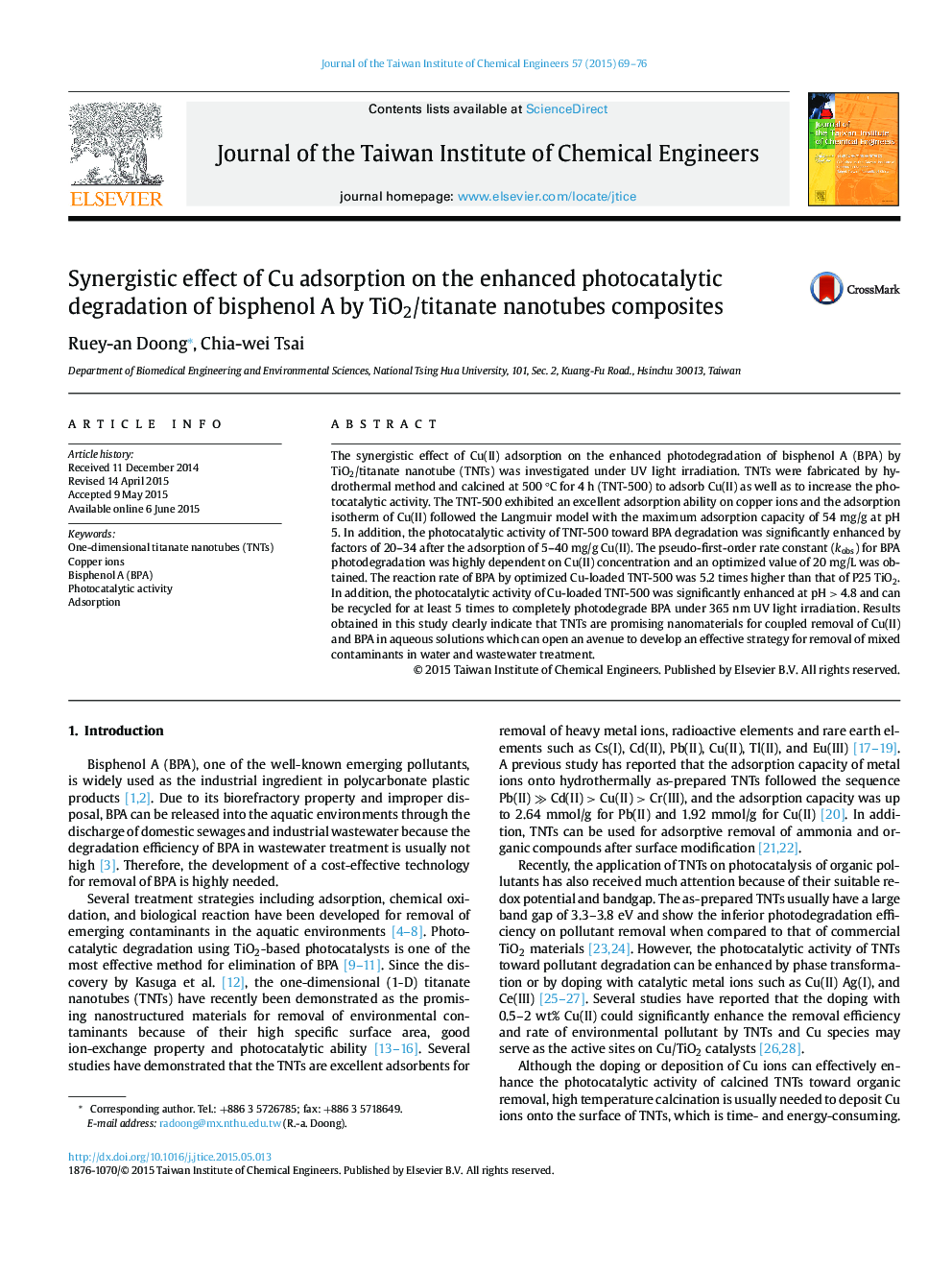| کد مقاله | کد نشریه | سال انتشار | مقاله انگلیسی | نسخه تمام متن |
|---|---|---|---|---|
| 690798 | 1460417 | 2015 | 8 صفحه PDF | دانلود رایگان |

• The adsorption of Cu(II) by TNTs follow Langmuir model and the maximum adsorption capacity was 54 mg/g.
• Adsorption of Cu(II) enhances the photoactivity of TNTs toward bisphenol A degradation by a factor of 20–34.
• The photodegradation rate of Cu-adsorbed TNTs was 5.2 times higher than that of P25 TiO2.
• The photodegradation rate of BPA increased 2 orders of magnitude when pH increased from 2.9 to 7.6.
The synergistic effect of Cu(II) adsorption on the enhanced photodegradation of bisphenol A (BPA) by TiO2/titanate nanotube (TNTs) was investigated under UV light irradiation. TNTs were fabricated by hydrothermal method and calcined at 500 °C for 4 h (TNT-500) to adsorb Cu(II) as well as to increase the photocatalytic activity. The TNT-500 exhibited an excellent adsorption ability on copper ions and the adsorption isotherm of Cu(II) followed the Langmuir model with the maximum adsorption capacity of 54 mg/g at pH 5. In addition, the photocatalytic activity of TNT-500 toward BPA degradation was significantly enhanced by factors of 20–34 after the adsorption of 5–40 mg/g Cu(II). The pseudo-first-order rate constant (kobs) for BPA photodegradation was highly dependent on Cu(II) concentration and an optimized value of 20 mg/L was obtained. The reaction rate of BPA by optimized Cu-loaded TNT-500 was 5.2 times higher than that of P25 TiO2. In addition, the photocatalytic activity of Cu-loaded TNT-500 was significantly enhanced at pH > 4.8 and can be recycled for at least 5 times to completely photodegrade BPA under 365 nm UV light irradiation. Results obtained in this study clearly indicate that TNTs are promising nanomaterials for coupled removal of Cu(II) and BPA in aqueous solutions which can open an avenue to develop an effective strategy for removal of mixed contaminants in water and wastewater treatment.
Figure optionsDownload as PowerPoint slide
Journal: Journal of the Taiwan Institute of Chemical Engineers - Volume 57, December 2015, Pages 69–76